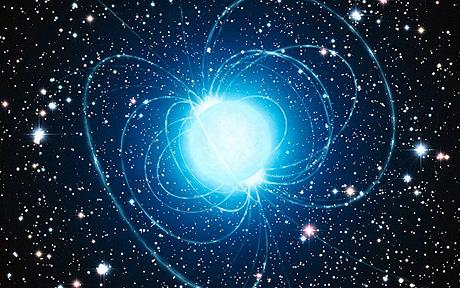sciene
Magnetic Mega-Star Discovery Challenges Black Hole Theory
A neutron star with a mighty magnetic field has thrown down the gauntlet to theories about stellar evolution and the birth of black holes, astronomers said today.

This artist’s impression of a magnetar contains hundreds of very massive stars, some shining with a brilliance of almost one million suns Photo: ESO
The “magnetar” lies in a cluster of stars known as Westerlund 1, located 16,000 light years away in the constellation of Ara, the Altar.
Westerlund 1, discovered in 1961 by a Swedish astronomer, is a favoured observation site in stellar physics. It is one of the biggest cluster of superstars in the Milky Way, comprising hundreds of very massive stars, some shining with a brilliance of almost a million Suns and some two thousand times the Sun’s diameter.
The cluster is also, by the standards of the Universe, very young.
The stars were all born from a single event just three and a half to five million years ago.
Within Westerlund 1 is the remains of one of galaxy’s few magnetars – a particular kind of neutron star, formed from the explosion of a supernova, that can exert a magnetic field a million, billion times strong than Earth’s.
The Westerlund star which eventually became the magnetar must have been at least 40 times the mass of the Sun, according to the study, which appears in the research journal Astronomy and Astrophysics. If so, intriguing questions are raised.
The mainstream assumption is that stars of between 10 and 25 solar masses go on to form neutron stars. But those above 25 solar masses produce black holes — the light-gobbling gravitational monsters that are formed when a massive, dying star collapses in on itself.
In that case, the magnetar’s mother should have become a black hole because it was so big.
But another alternative, say the authors, is that the star “slimmed” to a lower mass, enabling it to become a neutron star.
How did this happen? The answer, says the paper, could lie in a binary system: the star that became the magnetar was born with a stellar companion.
As the stars evolved, they began to interact, and the companion star, like a demonic twin, began to steal mass from the progenitor star.
Eventually the progenitor exploded, becoming a supernova.
Read moreMagnetic Mega-Star Discovery Challenges Black Hole Theory